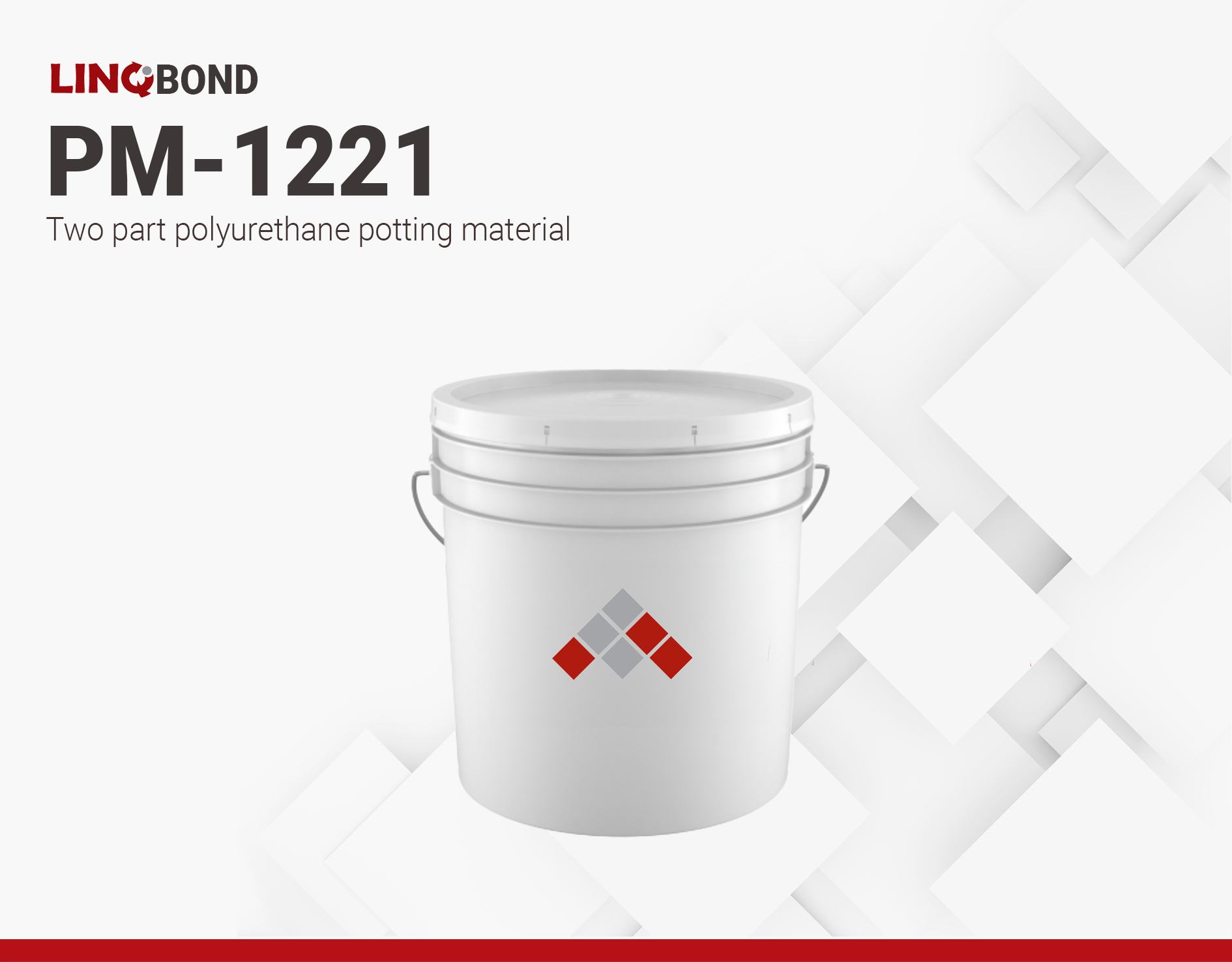OPTOLINQ PM-1221 | Two part polyurethane potting material
- Low-stress potting material
- Excellent seismic and voltage resistance
- Room temperature curing
Product Description
OPTOLINQ PM-1221 is a two-component polyurethane potting material engineered for low-stress applications. It offers good insulating properties and exceptional high-temperature, seismic, and voltage resistance. With its excellent fluidity during application and minimal bubble formation upon curing, OPTOLINQ PM-1221 seamlessly integrates into your projects, ensuring a smooth and reliable finish.
OPTOLINQ PM-1221 is the ideal choice for casting bonding, and sealing electronic components operating in challenging environments such as high pressure, high frequency, humidity, and heat. It is perfectly suited for precision arresters, various transformers, filters, control boards, and igniters.
Technical Specifications
| General Properties | |||||
| Chemistry Type | Polyurethane | ||||
| Mix Ratio Mix Ratio The amount of a constituent divided by the total amount of all other constituents in a mixture | 5:1 | ||||
| Specific Gravity Specific Gravity Specific gravity (SG) is the ratio of the density of a substance to the density of a reference substance; equivalently, it is the ratio of the mass of a substance to the mass of a reference substance for the same given volume. For liquids, the reference substance is almost always water (1), while for gases, it is air (1.18) at room temperature. Specific gravity is unitless. | 1.5–1.7 | ||||
| Physical Properties | |||||
| Viscosity Viscosity Viscosity is a measurement of a fluid’s resistance to flow. Viscosity is commonly measured in centiPoise (cP). One cP is defined as the viscosity of water and all other viscosities are derived from this base. MPa is another common unit with a 1:1 conversion to cP. A product like honey would have a much higher viscosity -around 10,000 cPs- compared to water. As a result, honey would flow much slower out of a tipped glass than water would. The viscosity of a material can be decreased with an increase in temperature in order to better suit an application | 3000–5000 mPa.s | ||||
| Electrical Properties | |||||
| Dielectric Strength Dielectric Strength Dielectric strength is measured in kV per mm and is calculated by the Breakdown voltage divided by the thickness of the tested material. Those two properties go hand in hand and while Breakdown voltage is always thickness dependent, dielectric strength is a general material property. As an example, the dielectric strength of Polyimide is 236 kV/mm. If we place 1mm of Polyimide between two electrodes, it will act as an insulator until the voltage between the electrodes reaches 236 kV. At this point it will start acting as a good conductor, causing sparks, potential punctures and current flow. | ≥25 kV/mm | ||||
| Volume Resistivity Volume Resistivity Volume resistivity, also called volume resistance, bulk resistance or bulk resistivity is a thickness dependent measurement of the resistivity of a material perpendicular to the plane of the surface. | 1.0 × 10¹⁵ Ohms⋅cm | ||||
| Mechanical Properties | |||||
| |||||
| |||||
| Thermal Properties | |||||
| Operating Temperature | –60 to 150 °C | ||||
| Thermal Conductivity Thermal Conductivity Thermal conductivity describes the ability of a material to conduct heat. It is required by power packages in order to dissipate heat and maintain stable electrical performance. Thermal conductivity units are [W/(m K)] in the SI system and [Btu/(hr ft °F)] in the Imperial system. | ≥0.6 W/m.K | ||||
Additional Information
Processing Instructions
- Mix component A and B according to specified ratio. Stir thoroughly to ensure uniformity while preventing air to be introduced into the mixture.
- Degas the mixture to remove the bubbles for about 5 minutes. Do not fill the container more than half full to prevent overflowing during degassing.
- Gradually pour the mixed compound into the device being potted. If the ambient temperature is around 5 °C, preheat components A and B to around 15 °C.
- Allow the potted workpiece cure at room temperature until the surface is dry. Full curing typically occurs within 24 hours. The curing process is influenced by temperature variations; generally, higher temperatures result in faster curing, while lower temperatures lead to slower curing.
Precautions for Use
- Use the mixture promptly after combining components A and B to prevent a significant increase in viscosity.
- If the components have been stored for an extended period and exhibit precipitation or stratification, they should be thoroughly mixed before use. Component B is prone to crystallization at low temperatures; therefore, it should be stored in a warmer environment to melt prior to use, ensuring product performance remains unaffected.
Please note that the provided information is based on available data and typical conditions. For specific applications and detailed test results, refer to the actual test data and conduct appropriate certifications.
Storage and Handling
Store in a ventilated, dry, and clean environment below 25 °C and 50% RH. Keep away from fire and heat sources. It is strictly forbidden to store in outdoor environments. At proper storage conditions, Part A and Part B has a shelf life of 6 months. Shelf life can be extended by using cold storage.



